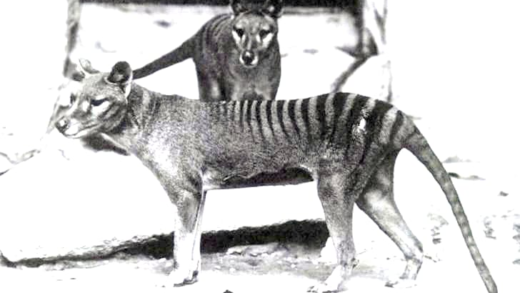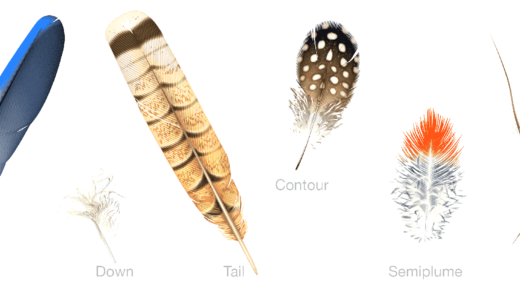Marsupials are unique mammals characterized by their pouches for nurturing young. They differ from placental mammals in their reproductive methods, often giving birth to less developed offspring. Examples beyond kangaroos include koalas, wombats, and possums. Marsupials exhibit various eating habits and inhabit diverse environments. Many are endangered due to habitat loss and climate change. Their remarkable adaptations, including strong limbs and flexible diets, help them survive. Marsupials demonstrate attentive care for their young, fostering essential skills for independence. Interesting facts reveal their unique features and adaptations.
What Are Marsupials?
Marsupials are a unique group of mammals known for their distinct reproductive system and pouch. The most recognizable feature of marsupials is their pouch, where they carry and nurse their young. Unlike placental mammals, marsupials give birth to relatively undeveloped young, which then continue to grow in the safety of the pouch. This fascinating method of reproduction is not only a hallmark of marsupials but also a key factor in their survival in various habitats.
Differences Between Marsupials and Other Mammals
The primary distinction between marsupials and other mammals lies in their reproductive process. While placental mammals nurture their offspring in the womb until they are fully developed, marsupials deliver their young at an earlier stage. This results in the young being tiny and less developed, requiring immediate care in the pouch. Furthermore, marsupials have a unique structure in their reproductive system, including bifurcated vaginas and a specialized penis, which differs from the anatomy of placental mammals. This evolutionary adaptation allows marsupials to thrive in specific ecological niches.
Examples of Marsupials Besides Kangaroos
While kangaroos are the most famous marsupials, many other species exist that showcase the diversity within this group. Some notable examples include:
- Koalas: Known for their eucalyptus diet and tree-dwelling lifestyle.
- Wombats: Burrowing marsupials that are stout and robust.
- Possums: Small to medium-sized marsupials known for their adaptability.
- Tasmanian Devils: Carnivorous marsupials with a fierce reputation.
- Quokkas: Small, friendly marsupials often referred to as the “world’s happiest animal.”
These examples illustrate that marsupials come in various shapes and sizes, each adapted to their environment.
Purpose of a Marsupial’s Pouch
The pouch of a marsupial serves several vital functions. Primarily, it provides a safe environment for the young to develop after birth. This pouch protects the vulnerable offspring from predators and environmental hazards while allowing them to nurse and grow. The pouch also facilitates bonding between the mother and her young, ensuring that the young receive the necessary nutrients for growth. Additionally, some species can close their pouches tightly to prevent dirt and debris from entering, showcasing an evolutionary adaptation for survival.
How Marsupials Reproduce
Reproduction in marsupials involves a unique process. After mating, the female marsupial gives birth to a tiny, underdeveloped young that immediately crawls into the pouch. Once in the pouch, the young latch onto a teat and continue to develop. This stage can last several months, depending on the species. After leaving the pouch, the young may remain dependent on their mother for some time, gradually learning to forage for food and navigate their surroundings. This reproductive strategy not only enhances the survival chances of the young but also allows marsupials to thrive in various habitats.
Typical Habitats of Marsupials
Marsupials inhabit a variety of environments, each uniquely suited to their needs. Common habitats include:
- Forests: Many marsupials, like koalas and tree kangaroos, thrive in dense forests where they can find ample food and shelter.
- Grasslands: Species such as kangaroos and wallabies are often found in open grasslands, where they can graze on grasses.
- Deserts: Some marsupials, like the bilby, have adapted to arid environments, utilizing their burrowing skills to escape heat.
- Urban areas: Adaptable marsupials, like possums, often thrive in urban settings, scavenging for food and nesting in buildings.
These diverse habitats illustrate the adaptability of marsupials, showcasing their ability to survive in various ecological niches.
Eating Habits of Marsupials
Marsupials exhibit a range of dietary preferences, reflecting their adaptability. Their eating habits can be categorized as follows:
- Herbivorous: Many, like kangaroos and koalas, primarily consume plants. They have specialized digestive systems to break down tough vegetation.
- Carnivorous: Some marsupials, such as the Tasmanian devil, are meat-eaters, relying on small animals for sustenance.
- Omnivorous: Species like possums eat both plants and animals, allowing them to thrive in various environments.
These eating habits not only reflect their ecological roles but also highlight the importance of food availability in their habitats.
Are Marsupials Endangered?
Many marsupials face threats that put their survival at risk. Key factors include:
- Habitat Loss: Urbanization and deforestation have led to significant habitat destruction, impacting marsupial populations.
- Climate Change: Changes in climate affect food availability and habitat conditions, posing challenges for survival.
- Invasive Species: Predators like feral cats and foxes threaten vulnerable marsupials, particularly those that are already endangered.
Conservation efforts are essential to protect these unique mammals, with initiatives aimed at habitat restoration and species protection.
Adaptations of Marsupials for Survival
Marsupials have developed remarkable adaptations that enhance their chances of survival. These include:
- Pouch: The pouch protects and nurtures young marsupials, allowing them to develop safely.
- Strong Limbs: Many marsupials possess powerful legs for hopping or climbing, aiding in movement and escape from predators.
- Flexible Diets: Adaptations in feeding habits enable marsupials to thrive in various environments, from forests to deserts.
These adaptations illustrate how marsupials have evolved to fit their ecological niches, ensuring their survival in a changing world.
Marsupial Care for Young
Marsupial care for young is a fascinating process that highlights their unique reproductive strategies. After birth, the tiny, underdeveloped young marsupials crawl into their mother’s pouch, where they find a safe haven to grow. This pouch serves not only as a protective space but also as a nurturing environment where the young latch onto a teat and receive essential nutrients. The duration of pouch life can vary significantly among species, ranging from a few months to over a year.
During this time, the mother is highly attentive, often grooming her young and ensuring they are well-fed. Once the young marsupials begin to grow and develop, they may start to peek out of the pouch, gradually spending more time outside as they learn to forage and explore their surroundings. This gradual weaning process is crucial, allowing young marsupials to gain independence while still relying on their mother’s care. Such nurturing behavior is vital for their survival, as it ensures they are equipped with the skills needed to thrive in their natural habitats.
Interesting Facts About Marsupials
Marsupials are not just unique in their reproductive strategies; they also have a treasure trove of interesting facts. Here are a few lesser-known tidbits about these remarkable mammals:
- Unique Teeth: Many marsupials have special teeth that are adapted to their diets. For example, koalas have sharp molars to help them chew tough eucalyptus leaves.
- Vocal Communication: Marsupials often use a variety of sounds to communicate. For instance, the Tasmanian devil emits a range of vocalizations to express different emotions.
- Short Gestation Periods: Marsupials generally have shorter gestation periods compared to placental mammals, which is why their young are born underdeveloped.
- Varied Lifespans: Depending on the species, marsupials can have significantly different lifespans, from a few years for smaller species to over a decade for larger ones.
- Incredible Adaptations: Some marsupials, like the numbat, have evolved specialized tongues to help them feed on termites, showcasing their adaptability to specific ecological niches.
These facts underline the diversity and adaptability of marsupials, making them a captivating subject of study for wildlife enthusiasts and researchers alike.





Comments are closed.